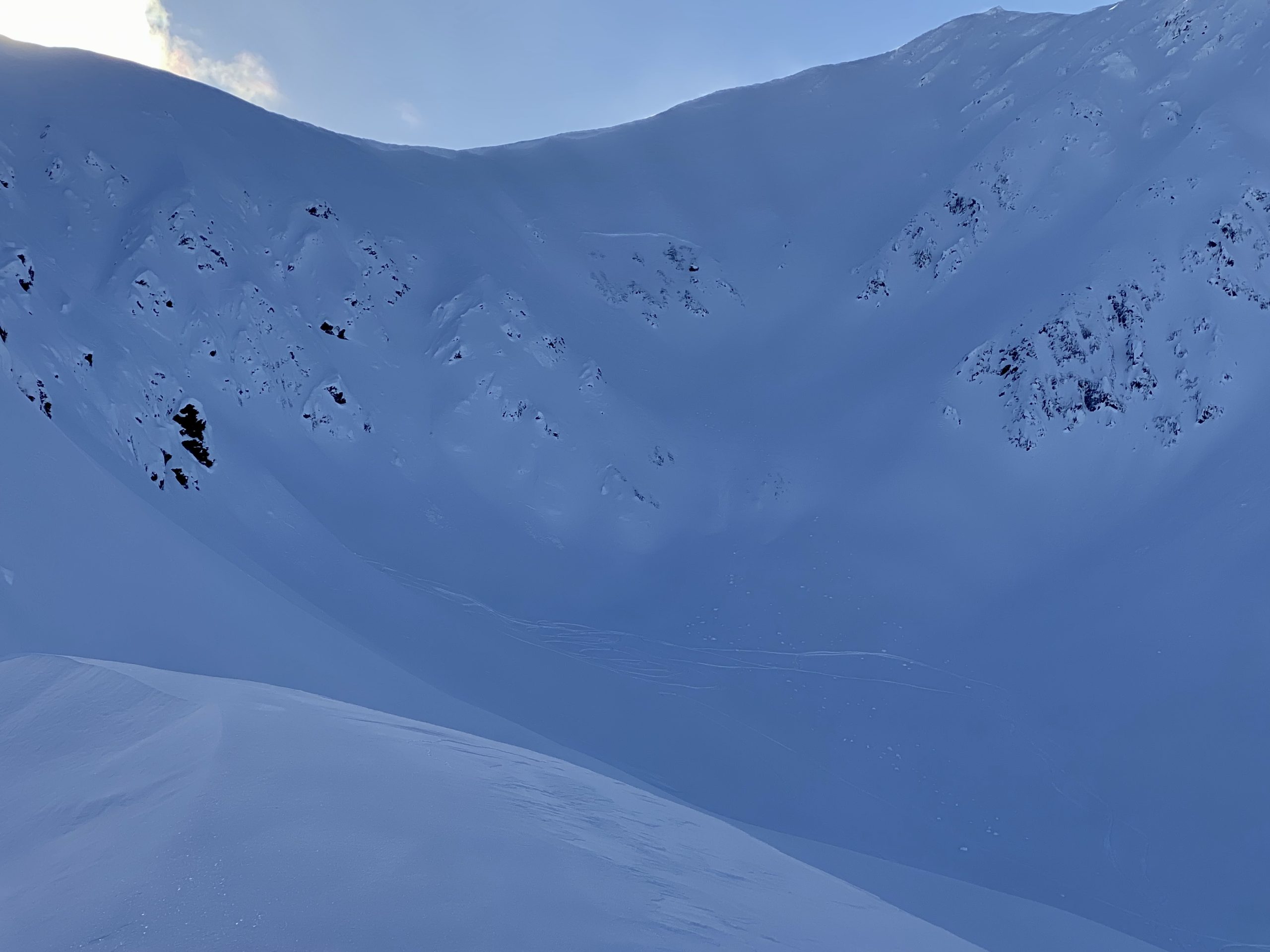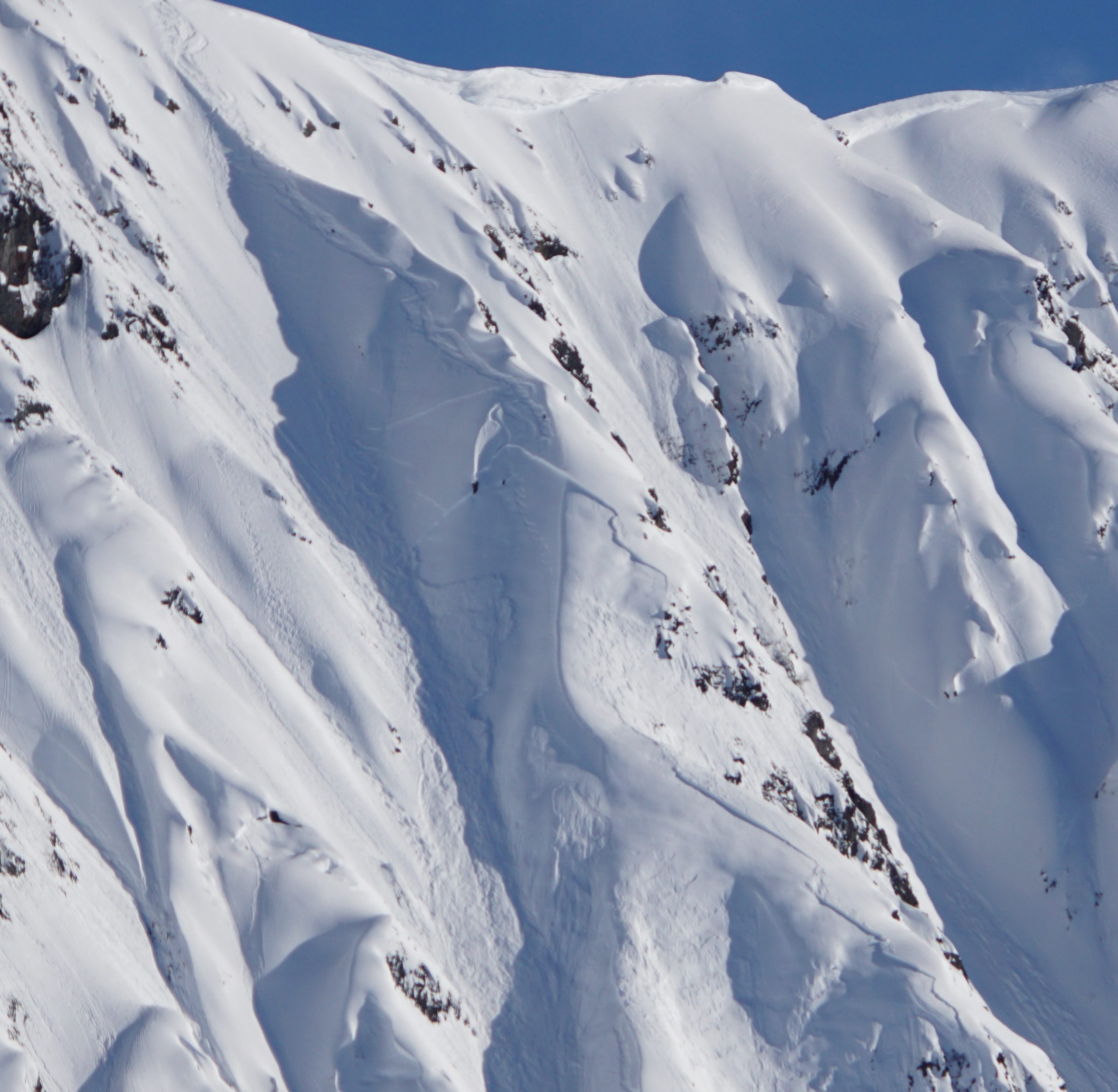Turnagain Pass
|
|
The avalanche danger is MODERATE above 1000′. Continued wind loading overnight will make human triggered avalanches 1-2′ deep possible at upper elevations. There are also several buried weak layers in the upper 3′ of the snowpack which may have been involved with a human triggered avalanche on Sunday 2/19/23. Larger human triggered avalanches 2-3′ deep are possible on these buried weak layers and triggering one of these layers is more likely if the sun is rapidly warming the snow surface. Below 1000′ the avalanche danger is LOW.
SUMMIT LAKE / LOST LAKE / SNUG HARBOR: Strong NW winds over the past 24 hours formed fresh wind slabs at upper elevations and may make existing buried weak layers more likely to produce avalanches. Identifying features of concern and testing surface avalanche conditions on small terrain features is recommended before committing to steeper terrain.




